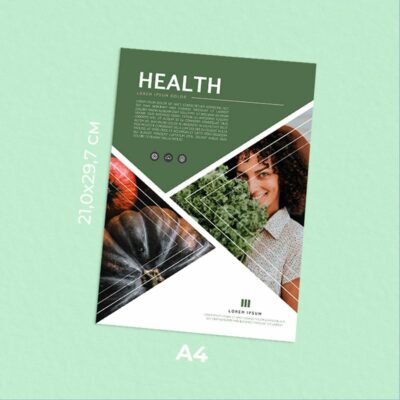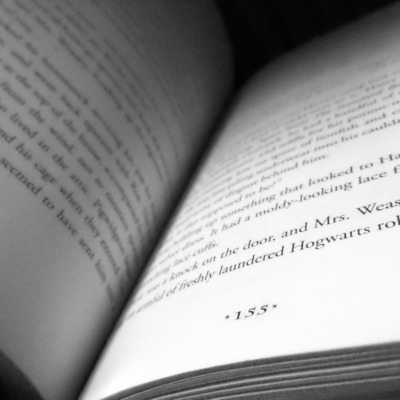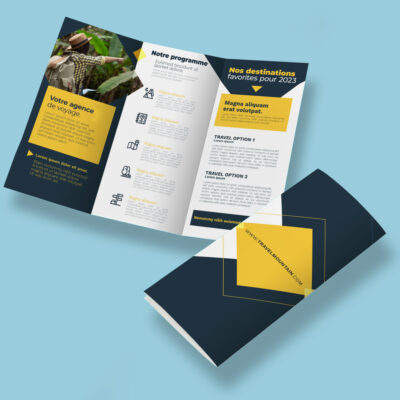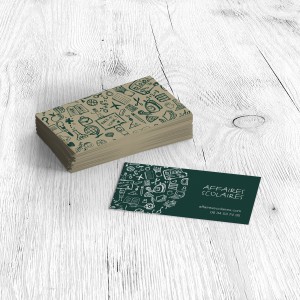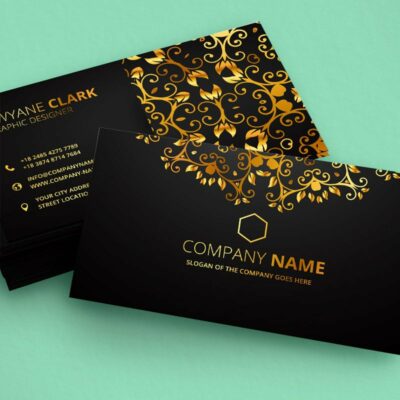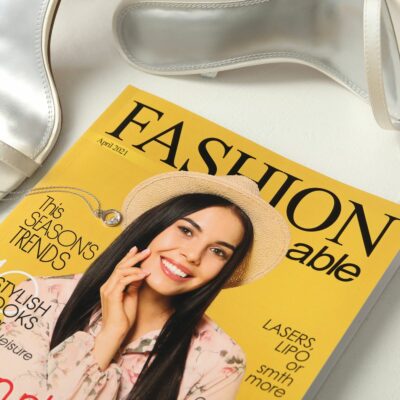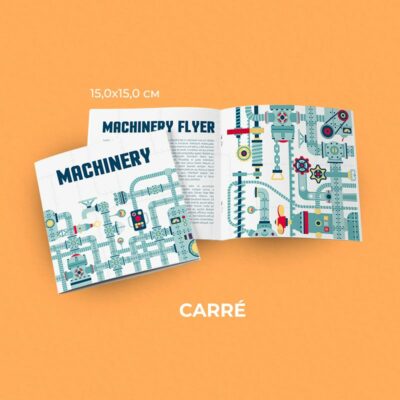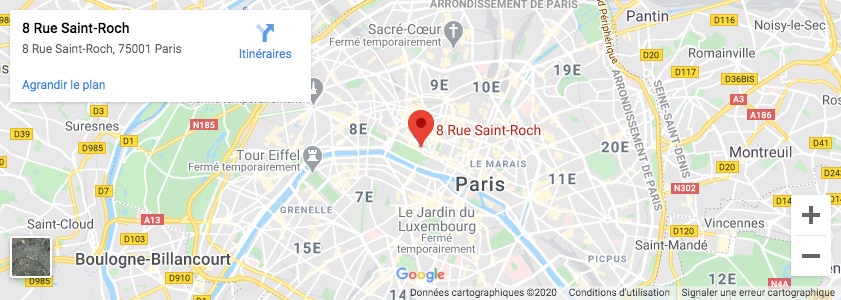- Notre imprimerie est fermée jusqu'au 7 juillet ☀️ Attention aux délais de vos commandes. ☀️ Les commandes en lignes sont temporairement désactivées
- Notre imprimerie est fermée jusqu'au 7 juillet ☀️ Attention aux délais de vos commandes. ☀️ Les commandes en lignes sont temporairement désactivées
- Call us 01 42 61 00 33
Monday to Friday 9:00 - 18:00 IMMEDIATE
CUSTOMISED QUOTERETRAIT EXPRESS
& LIVRAISON J+1-
-
- All
products - Cards
- Brochure
Files - Advertising
- Printing
- Office automation
- Adhesives
- Signage
- Themes
- Printing
Express in 4H
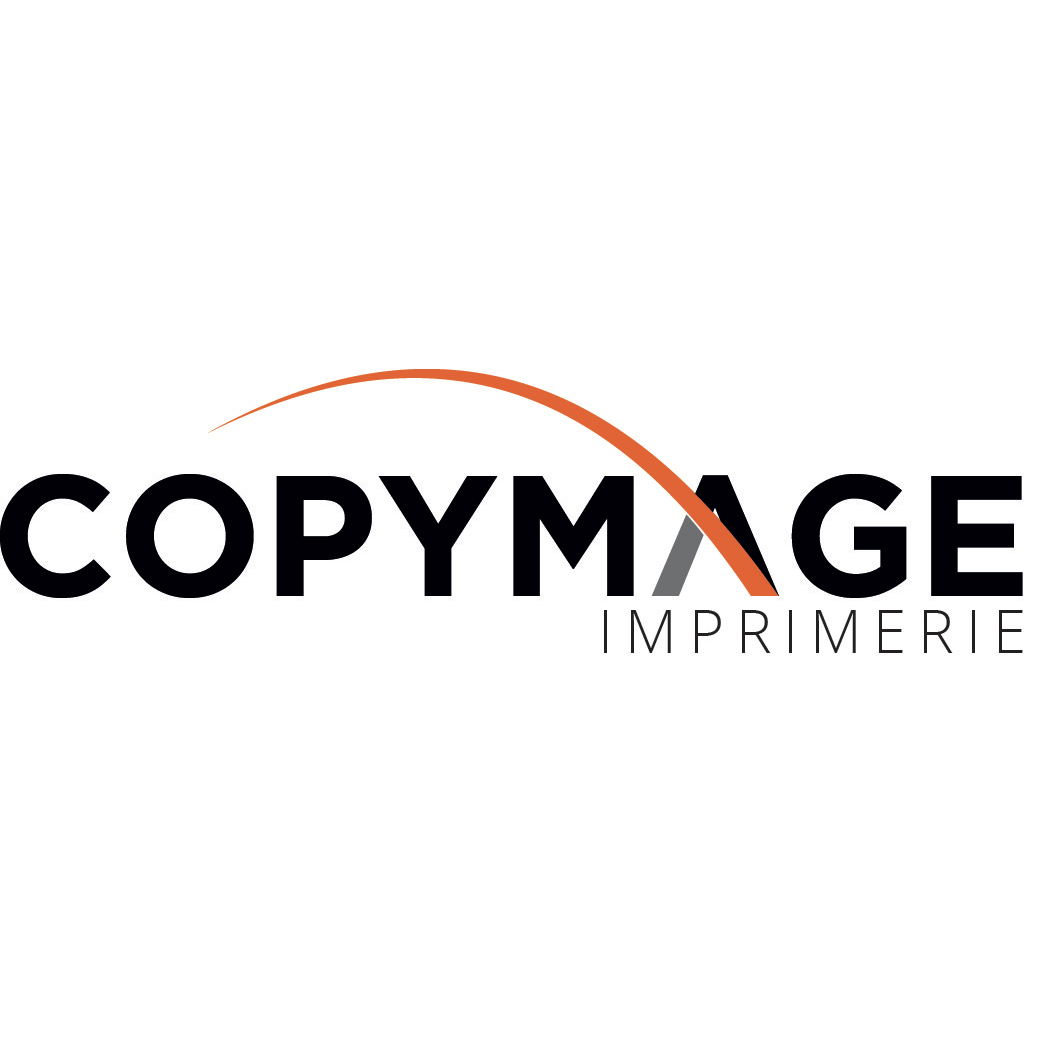
Tips & tricks from your printer
The 3 steps to create a perfect brochure
The brochure is a flexible and effective communication medium. It can be used to present your promotional offers, to convince young graduates to join your team, to provide technical information on your products, to communicate with your employees, etc.
To create an effective brochure, it is therefore essential to carefully define the objectives pursued in order to deduce the appropriate content and the ideal form.
To help you create your perfect brochure, we at Copymage have put together a simple 3-step guide.
Step 1 to create the perfect brochure: identify objectives and targets
This first step is fundamental! In order to create a truly effective brochure, it is essential to start by identifying the objectives and targets to be reached. Creating a brochure can meet many expectations: present your company, communicate on a new offer, promote internal achievements, welcome your new employees, etc.
Therefore, it is important to determine your main objective in order to create the perfect brochure. From the definition of the objective will naturally follow the definition of the target population to reach.
- Thus, the objective of an advertising brochure will be to present your products, your services, your promotions to your future customers. In other words: to convince the readers of your brochure to buy the products you offer. You can choose to present a new offer to your regular customers or decide to address a new clientele. The marketing strategy you choose will have a significant impact on the design of your brochure.
- Similarly, if you want to address your employees, you can choose to create a brochure that will take the form of a 32-page magazine. In this case, the target seems obvious: your employees. However, this magazine could just as easily interest future recruits by contributing to your employer brand. However, the information you are targeting to your employees may not be the same as the information you want to highlight to future recruits. You need to ask yourself what the main objective is: to inform your teams, to create cohesion, to highlight their achievements, to present the company's values, to inform about recruitment methods, etc.?
These elements will define and structure the content of your brochure. They will guide the writing of the call to action, i.e. the formulation in simple and effective terms of the reaction you hope to get from the readers of your brochure.
For example, during the sales period, the brochure created presents the products benefiting from the promotion, the amount of the reductions, the sales periods. The call to action must be expressed very clearly: "come and take advantage of the sales from such date to such date".
Step 2 to create the perfect brochure: define the content
Whatever its purpose, creating a brochure involves carefully defining the content according to the objectives and targets identified in step 1.
- Tailor the content to the purpose: It can be tempting to create a brochure that presents as much information as possible. However, creating an effective brochure means selecting and prioritizing information according to the objectives you have set. It is not necessary to include a long presentation of your company's history and values in a promotional brochure. However, it is essential to present your key products and to clearly specify your store's contact information, as well as how to sell online.
- Tailor the tone and language to the target audience: the tone used, the level of vocabulary and the amount of text in your brochure will vary depending on the population you want to reach. This is crucial when creating a user guide. It is essential that the instructions are written in clear language that everyone can understand. If there are steps to follow in order to use a product or build an object, they should appear in numbered form. Don't hesitate to break up the content of your brochure so that readers can easily grasp the information provided.
- Adapting illustrations to the content: it is always a good idea to use graphics or illustrations to give rhythm to the reading of the brochure created. These illustrations should serve the text and be consistent with each other throughout the brochure. To create a perfect brochure, you can use photos you have taken yourself, images from image banks, graphics or drawings. In all cases, pay attention to the good definition of the images and to the harmony of their tones with the graphic identity of your company. Finally, you must have the rights to use all the illustrations and photos used in your brochure.
Step 3 to create the perfect brochure: Careful layout
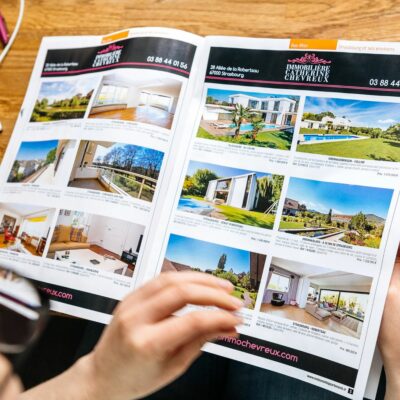
A good text structure increases the readability of your brochure. There are several tips available to you for this:
- Prefer short paragraphs , each presenting one idea in a synthetic way.
- Use bullets and enumerations to capture the reader's attention on key elements and pace the reading.
- Highlight certain key words by putting them in bold or italics.
- Lighten the content of your brochure by skipping lines between each paragraph, don't be afraid to leave blank spaces that allow readers to catch their breath and better appropriate the information you are offering them.
- Choose simple fonts that are compatible with each other, without exceeding three different fonts throughout your brochure. Consistency in design also makes it easier to read.
- Make your texts accessible to as many people as possible by choosing a font size of at least 12 points for the body text. In addition, the size of headings should be chosen according to their importance and their place on the page.
- Fine-tune the layout of the illustrations to pace the reading experience and make your readers see what you're talking about. In stapled brochures, the illustrations can span two facing pages without losing their quality. This allows you to place your products in the center of your promotional brochure. In the case of a welcome booklet, photos of your company's teams and achievements will convince your new recruits that they should join your team.
To get all the technical information on formats, papers and finishes available to you to create the perfect brochure, we invite you to contact our expert teams. Moreover, if your request is urgent, we can print your brochure in 4 hours with the Express option.
Our rates
The best prices on the market
The quality
We are demanding and attentive to your satisfaction
Our deadlines
Tight deadlines thanks to our continuous production system
Imprim'vert label
We are careful about our footprint and waste management. We have obtained the Imprim'vert label.
Help & Advice
Our experts are here to help you.
HELP & ADVICE
Our experts are here to help you. Do not hesitate to contact them.
Adresse
8 rue Saint Roch 75001 Paris
Metro
Line 1 Tuileries
Line 14: Pyramides Line 14 : Pyramids
Bus
Lines: 21, 27, 68, 72, 81











